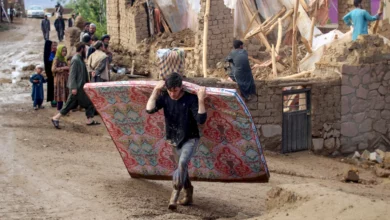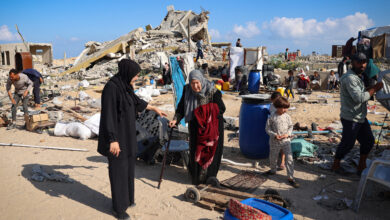Minister of Family and Population Moushira Khattab opened a press conference on Monday on the Survey on Young People in Egypt (SYPE). Young people, she said, are the vehicle of social and economic development, and it is important to address their needs and provide them with opportunities.
Young people between the ages of 15 and 24 make up around 27 percent of the world’s population. Like many other countries in the Middle East and North Africa, Egypt is witnessing a “youth bulge.” According to the 2006 Egyptian census, approximately 40 percent of Egyptians fall between the ages of 10 and 29. This bulge offers an opportunity as well as a challenge to national polices–creating the need for more comprehensive data on youth in Egypt.
The Population Council, in collaboration with the Information and Decision Support Center and the Egyptian government, initiated the first national youth survey in Egypt since 1997. The project was supported by various UN agencies and international donors.
SYPE covers a nationally representative sample of 15,029 young people aged 10-29 from all Egyptian governorates. The survey presents information on five key issues: education, family formation, employment, health, and civic and political participation.
The survey’s preliminary findings revealed that young people in Egypt, especially from poor households, face various health risks, diminishing education and labor market opportunities as well as social and political exclusion.
The survey found that around 400,000 young people in Egypt are disabled. One quarter of young Egyptian males smoke, while three percent have used illicit drugs and one percent consume alcohol. Furthermore, around a third of young people are not involved in any physical activity, either for leisure or as part of their daily routine. This finding is in line with the 2008 Egyptian Demographics Health Survey, which reported alarming signs of obesity among young Egyptians, putting them at risk of diabetes and heart-related diseases.
The survey provides rich insight on young people’s economic status and participation in the labor force. The unemployment rate among males aged 15-29 is 16 percent. That number triples for females, leaving Egypt with one of the lowest rates of female participation in the workforce in the world. Figures on child workers are also alarming. Around 17,000 children aged 10-14 are working, mainly in agriculture and construction.
As a result of all the difficulties young people face in Egypt, around 30 percent of young males expressed an intention to migrate, mainly to Gulf counties, with Saudi Arabia ranking as the most desirable destination (33 percent), followed by Kuwait (19 percent) and the UAE (17 percent).
Early marriage is another challenge facing Egyptian society. Although a recent child law raised the legal age for marriage from 16 to 18, early marriage is still prevalent. According to the survey, 40 percent of females aged 18-24 and three percent aged 15-17 are married. Early marriage is primarily a rural phenomenon, accounting for nearly 70 percent of the total. Most such marriages are consanguineous (marriage between cousins or other relatives), which could compromise the health of future children.
On a different note, over 50 percent of females aged 14-15 reported hearing inappropriate comments about sex from a stranger. Ironically, 73 percent of those surveyed agreed that girls should be harassed if dressed “provocatively." And 38 percent of males and 34 percent of females believe a husband is permitted to inflict physical violence on his wife if she refuses to have sex.
Egyptian youth, the survey found, tend to be socially and politically disengaged. The survey revealed that only five percent of the young people are engaged in youth centers, political parties, unions or associations, and only 16 percent of eligible young people voted in the previous elections.
Despite continued efforts to address the gender gaps, the survey also showed the patriarchal views of many young Egyptians. For example, the majority of young males interviewed believe that male education is more important than female education, that domestic work is primarily a woman’s responsibility, that married women should obtain their husbands’ permission for most decisions, and that beating a wife is justified under certain conditions. Many of these views were also shared by females.
The survey’s findings suggest that poverty is an important factor in youth marginalization. Young girls and boys from poor households are more likely to experience all of the above constraints, blocking them from full social, economic and political participation in their communities.
In order to seize the opportunities offered by the current "youth bulge," many changes are needed. The education system needs to be more effective, females should be ensured better job prospects, and the health care system should provide youth with adequate services and greater awareness about issues relating to sexual and reproductive health. Finally, overcoming poverty and gender discrimination should be made a national priority.




